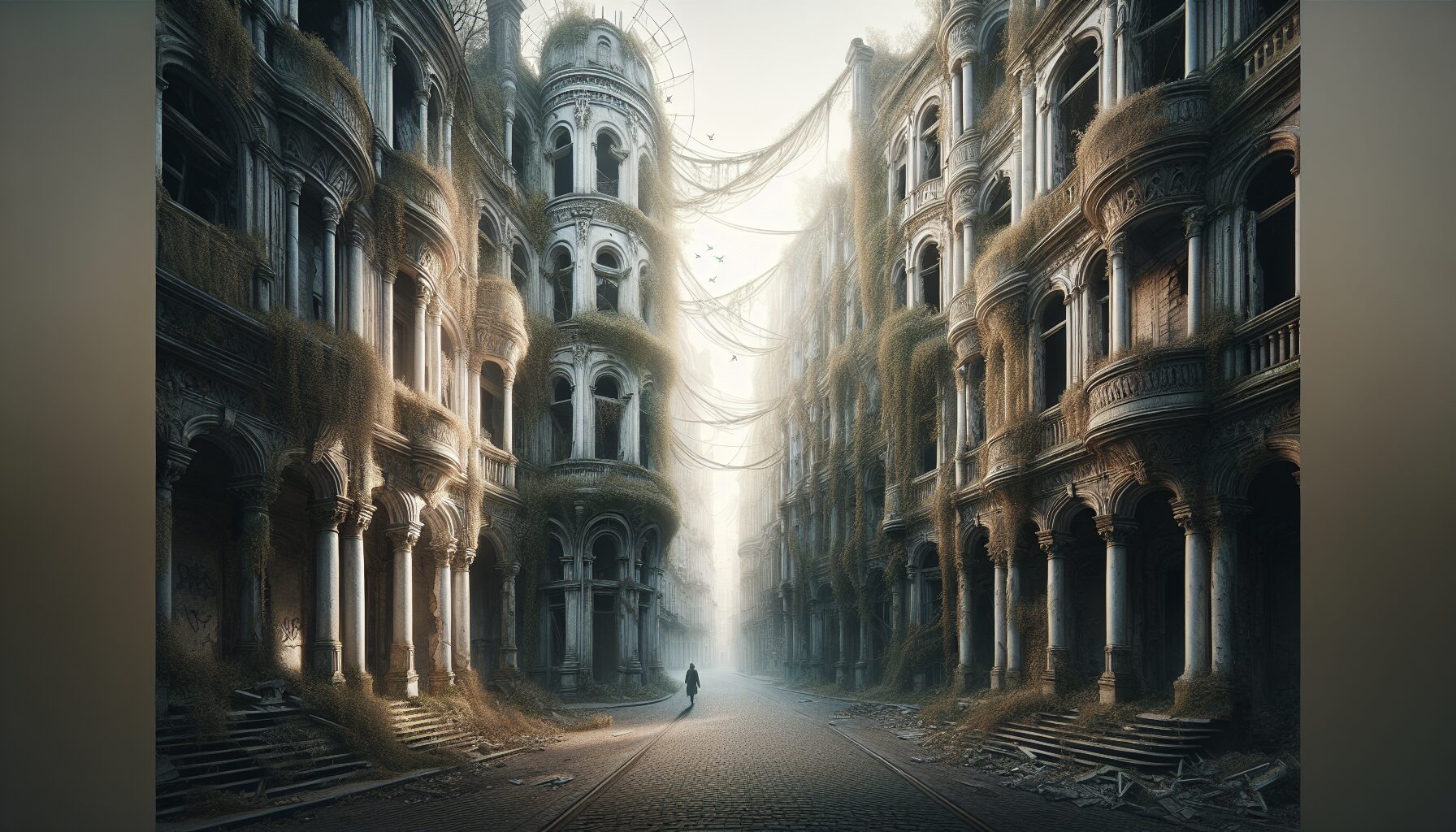The modern cityscape is often characterized by sleek skyscrapers, vibrant nightlife, and bustling streets. Yet, hidden in the shadows of this urban landscape lies an enduring fascination with the remnants of the past. Exploring the ruins of a city’s history can unlock a unique form of mysticism that resonates deeply with urban explorers and history enthusiasts alike.
The Allure of Urban Ruins
Urban ruins, often neglected and overgrown, hold an undeniable allure. These spaces are relics from another time, frozen in a state of decay. This paradox of both presence and absence captures the imagination and invites reflection. The popularity of movements such as urban exploration or “urbex” has grown significantly in recent years, with adventurers drawn to sites that range from industrial factories to abandoned theaters.
Renowned photographer Romain Veillon, who has captured countless hauntingly beautiful images of these spaces, notes, “Ruins are like a portal to the past; they give us a glimpse into the lives and dreams of those who came before us.” Such encounters provide a stark reminder of the impermanence of human endeavors, juxtaposed against nature’s relentless reclaiming of space.
Mysticism and Reflection
The mysticism associated with urban ruins extends beyond mere visual appeal. Walking through these spaces fosters a form of deep, almost spiritual reflection. The silence, often punctuated only by the sounds of nature or the occasional graffitied wall, encourages a contemplative state of mind. These sites become places of sanctuary, where one can escape the relentless pace of urban life and engage with the metaphysical.
“In every walk with nature, one receives far more than he seeks,” wrote the influential naturalist John Muir. While he referred to wild landscapes, the sentiment also applies to these urban jungles. Ruins invite visitors to ponder existential questions, consider the passage of time, and reflect on personal histories intertwined with the built environment.
Famous Urban Ruins
- Chernobyl Exclusion Zone: Perhaps the most infamous of urban ruins, Chernobyl’s deserted towns and villages offer a haunting glimpse into a world interrupted by disaster. Guided tours allow visitors to witness how nature has begun to reclaim these spaces.
- The Detroit Packard Plant: Once the largest and most advanced automobile factory in the world, this mammoth facility now stands as a symbol of Detroit’s industrial rise and fall. Its vast spaces, now inhabited by street artists and wildlife alike, exemplify urban decay.
- Hashima Island, Japan: Known as “Battleship Island,” Hashima was once a bustling center of coal mining. Today, its abandoned concrete structures provide a dramatic testament to the boom and bust of industrial modernity.
- Pompeii, Italy: Though not a modern ruin, Pompeii’s excavation allows visitors to walk streets frozen in time by volcanic ash, a powerful reminder of nature’s strength.
Reclaiming Lost Spaces
While many ruins remain untouched, others have been integrated into the living urban fabric, offering opportunities for communities to reclaim these spaces in creative and sustainable ways. Adaptive reuse is a practice that transforms derelict structures into new venues for art, culture, and community engagement.
The transformation of the High Line in New York City from an old railway to a thriving city park exemplifies this process. It has become a cherished green space that celebrates both the past and present, offering insight into how the scars of a city’s history can be healed and repurposed.
Conclusion
Walking among urban ruins is an experience that opens the door to a unique kind of mysticism that is as relevant today as it was when these structures were first built. They serve as reminders of the impermanence of human achievements and the enduring power of nature, inviting us to question our place within this world.
“We are all visiting this time, this place. We are just passing through. Our purpose here is to observe, to learn, to grow, to love… and then we return home,”
This quote serves as a poignant reminder of the transcendent nature of our existence. In the ruins of our cities, we find echoes of those who wandered before us and perhaps, a clearer understanding of our own journey.

Comments